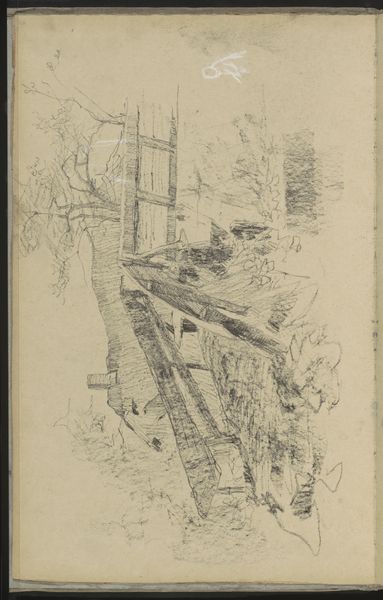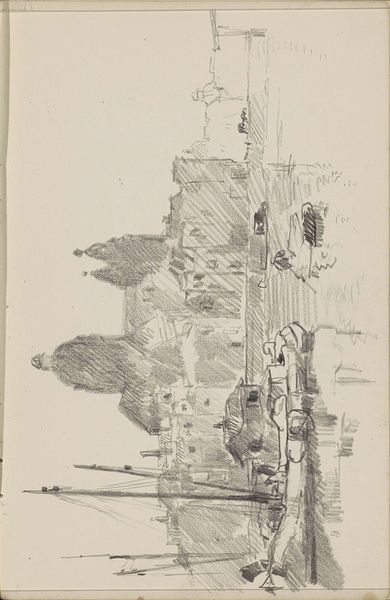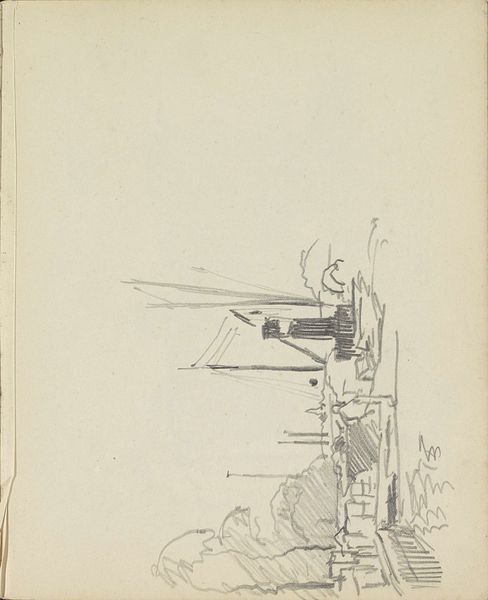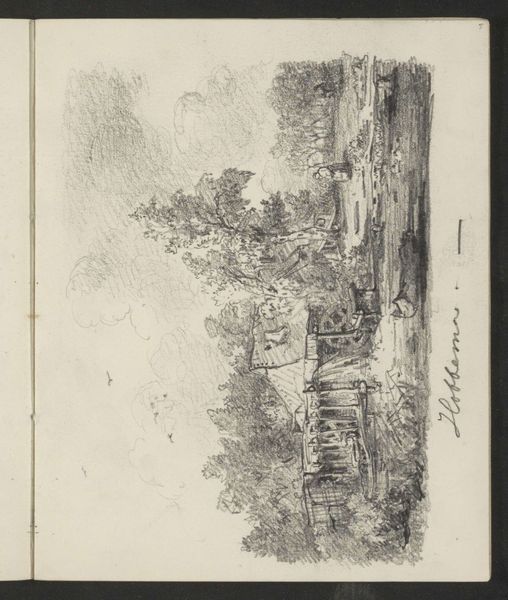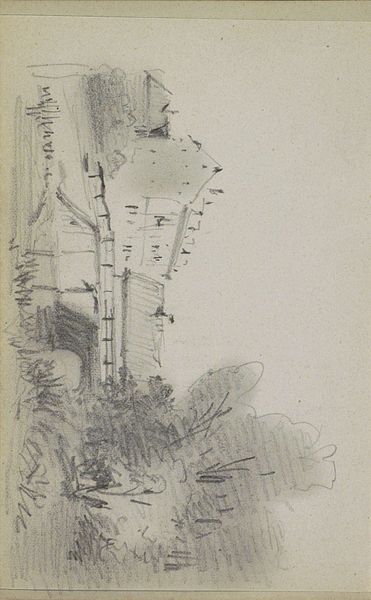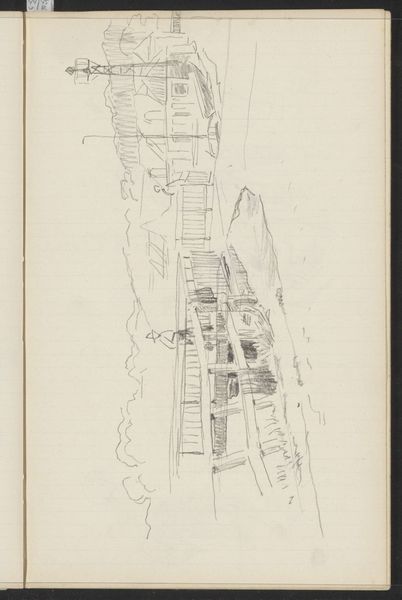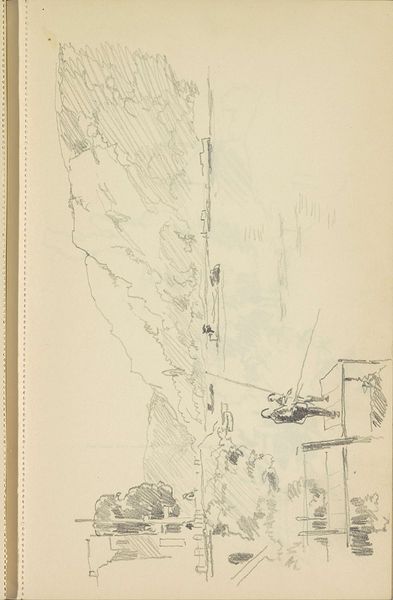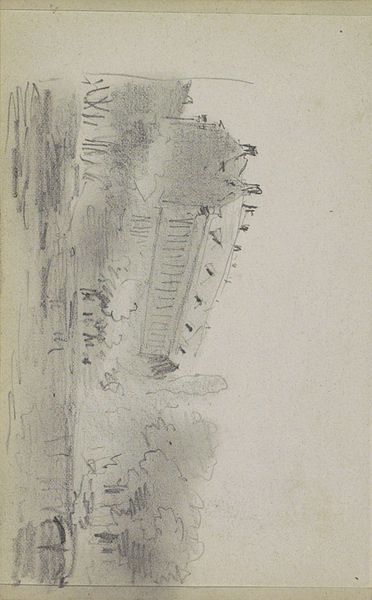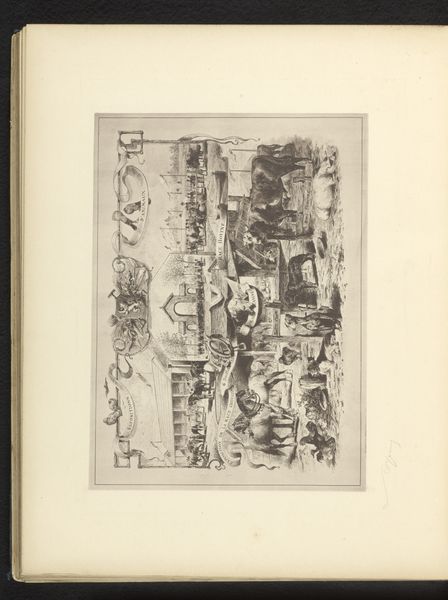
Copyright: Rijks Museum: Open Domain
Curator: Welcome. Before us we have "Gezicht op een aan het water gelegen stad," or "View of a Waterfront City," a drawing in pencil by Maria Vos, created sometime between 1890 and 1898. It’s currently housed here at the Rijksmuseum. Editor: Immediately, there's this sense of hazy nostalgia about it, isn’t there? Like a faded photograph you'd find tucked away in your grandmother’s attic. All the lines are so light and breathy. Curator: Absolutely. Vos employed a sketching technique characteristic of Impressionism. Note the rapid, broken lines, capturing the fleeting atmosphere of the waterfront. The method suggests an emphasis on capturing an immediate, sensory experience of this place, not necessarily its detailed rendering. Editor: Yes, almost dreamlike. And looking closely, the city seems to grow directly out of this dense, almost unruly foreground. Like it has been naturally woven from the landscape and mist itself, like one gigantic living thing. Is there anything known about how she developed these skills? Curator: Unfortunately, detailed archival material regarding Maria Vos's training and specific working processes is scant, particularly for sketches such as this. Generally, however, one can presume Vos, as a professional artist operating within established artistic circles, received academic instruction. Think in terms of standard practices relating to landscape and architectural sketching common at the time. That means we could understand this as an expression of artistic vision but necessarily as a socialised output reflecting industry demands. Editor: That tension feels like its on show to some extent in the picture though, doesn't it? I mean it has something both highly technical and carefully observed that at the same time blends this slightly unsettling lack of definition. Curator: Indeed. And there's a dialogue, too, between this image's material construction and the urban realities it presents. A common pencil, relatively inexpensive paper – materials very accessible for artists and perhaps suggesting the image's availability and accessibility at the time of creation. It also shows us that everyday experiences in developing urban landscapes could enter into and shape mainstream production, or otherwise provide sources for innovation. Editor: So in essence, something very profound can be woven into something apparently very ordinary. You leave the impression then of something both solid, civic and somehow as delicate and fragile as breath. That combination of concrete reality and wistful ethereal feelings really sings. Curator: A striking duality in an ostensibly simple cityscape view indeed. I concur that something beyond the city is on show, a way to understand what the city made visible in turn for its communities. Thank you.
Comments
No comments
Be the first to comment and join the conversation on the ultimate creative platform.
